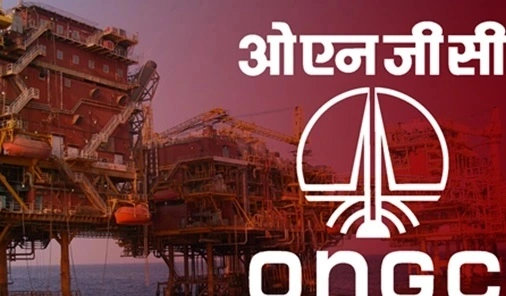The Oil and Natural Gas Corporation (ONGC), India’s largest oil and gas exploration and production company, is a vital player in the country’s energy sector. Founded in 1956 and headquartered in Dehradun, ONGC operates as a public sector undertaking (PSU) under the Ministry of Petroleum and Natural Gas. As a vertically integrated company, ONGC plays a pivotal role in meeting India’s growing energy needs. This article examines ONGC’s business model and explores how it earns money across its various operations.
Overview of ONGC’s Business Model

ONGC operates on an integrated energy business model, which includes upstream, midstream, and downstream activities. Its core functions revolve around:
- Exploration and Production (Upstream): Discovering and extracting crude oil and natural gas from onshore and offshore reserves.
- Transportation and Storage (Midstream): Managing pipelines and storage facilities for the efficient transport of hydrocarbons.
- Refining and Marketing (Downstream): Processing crude oil into petroleum products like gasoline, diesel, and LPG, and marketing them to end-users.
By maintaining a presence across the energy value chain, ONGC ensures a steady flow of revenue from multiple sources while reducing dependency on any single activity.
Revenue Streams
ONGC generates revenue through diverse channels:
a) Crude Oil Production
Crude oil production is ONGC’s primary revenue source, contributing significantly to its overall income. The company operates both onshore and offshore oil fields in India and abroad.
Revenue Generation:
- ONGC sells crude oil to downstream oil marketing companies (OMCs) such as Indian Oil Corporation (IOC), Bharat Petroleum (BPCL), and Hindustan Petroleum (HPCL).
- Pricing is influenced by global crude oil benchmarks like Brent and WTI, along with domestic government regulations.
b) Natural Gas Production
ONGC is the largest producer of natural gas in India. Natural gas extracted from its fields is sold to industries, power plants, fertilizer companies, and city gas distribution networks.
Revenue Generation:
- Revenue comes from long-term contracts with buyers.
- Gas pricing is regulated by the Indian government and linked to global benchmarks.
c) Petrochemicals and Refining
ONGC operates through its subsidiaries, including MRPL (Mangalore Refinery and Petrochemicals Limited), to refine crude oil into value-added products like:
- Gasoline
- Diesel
- Aviation turbine fuel
- Liquefied petroleum gas (LPG)
Revenue Generation:
- Income is earned through the sale of refined petroleum products.
- MRPL exports refined products, adding to ONGC’s international revenue stream.
d) Offshore Services
Through its subsidiary ONGC Videsh Limited (OVL), the company undertakes exploration and production projects in more than 15 countries. Offshore services include drilling, reservoir management, and engineering support.
Revenue Generation:
- Earnings from international oil and gas fields.
- Joint ventures and partnerships with global energy companies.
e) Value-Added Products
ONGC processes by-products from crude oil and natural gas production into value-added chemicals and petrochemicals, such as:
- Naphtha
- Ethylene
- Propylene
- Plastics and polymers
These products cater to industries like automotive, construction, and consumer goods.
f) Renewable Energy
Recognizing the shift towards clean energy, ONGC has ventured into renewable energy projects, including wind and solar power. While this segment is still nascent, it represents a growing source of revenue.
Revenue Generation:
- Selling renewable energy to state utilities and private players.
- Government incentives for renewable energy projects.
g) Dividends and Investments
ONGC earns additional income through its investments in subsidiary and joint venture companies, such as:
- HPCL: ONGC holds a majority stake in Hindustan Petroleum Corporation Limited.
- ONGC Videsh: Profits from international exploration projects contribute to overall revenue.
Cost Structure
ONGC’s operations involve significant capital and operational expenditures across its value chain:
a) Exploration and Development Costs
Discovering new oil and gas reserves requires advanced technologies like seismic surveys, drilling, and reservoir analysis, which contribute to high exploration costs.
b) Production and Operating Costs
Extracting hydrocarbons involves expenses related to:
- Drilling and maintenance of wells.
- Offshore platform operations.
- Transportation of oil and gas.
c) Refining and Processing Costs
Refineries incur costs for crude oil procurement, processing, and maintenance. Fluctuations in global crude oil prices impact operational expenses.
d) Research and Development (R&D)
ONGC invests heavily in R&D to improve exploration efficiency, reduce environmental impact, and develop renewable energy solutions.
e) Compliance and Royalties
As a PSU, ONGC adheres to government regulations, including payment of royalties, taxes, and subsidies, especially for selling natural gas and petroleum products.
f) Workforce and Infrastructure
With a vast workforce and infrastructure network, ONGC incurs costs related to salaries, training, and asset maintenance.
Key Strategies Driving Revenue Growth
a) Diversification
ONGC is diversifying its operations into renewable energy, petrochemicals, and international exploration to reduce dependence on domestic crude oil production.
b) Investment in Technology
The company adopts advanced technologies for deepwater exploration, enhanced oil recovery (EOR), and carbon capture to improve efficiency and sustainability.
c) Strategic Partnerships
Collaborating with global oil and gas companies enables ONGC to expand its reach, share technical expertise, and explore new markets.
d) Focus on Sustainability
ONGC is investing in green energy projects like wind, solar, and hydrogen to align with global decarbonization trends and government policies.
e) Operational Efficiency
By optimizing processes and cutting costs in exploration, production, and refining, ONGC ensures profitability even during volatile oil price scenarios.
Challenges and Opportunities
Challenges
- Price Volatility: Fluctuations in global crude oil prices directly impact revenue.
- Regulatory Risks: Government-imposed price controls and subsidies can affect profitability.
- Transition to Renewables: The global shift towards renewable energy may reduce long-term demand for oil and gas.
- High Operational Costs: Exploration in deepwater and ultra-deepwater fields involves significant expenditure.
Opportunities
- Global Expansion: International ventures through ONGC Videsh present lucrative opportunities for growth.
- Renewable Energy Growth: Investing in green energy projects can diversify revenue streams.
- Domestic Demand: India’s growing energy consumption offers consistent demand for ONGC’s products and services.
- Technological Advancements: Innovations in exploration and refining can lower costs and boost efficiency.
Financial Overview
As of the latest financial reports, ONGC remains a major contributor to India’s energy sector, generating significant revenue through crude oil and natural gas production. Despite challenges like volatile oil prices and regulatory controls, the company has maintained profitability through efficient operations and diversified revenue streams. Its subsidiaries, such as MRPL and HPCL, further strengthen its financial position.
Conclusion
ONGC’s integrated business model, spanning the entire energy value chain, ensures consistent revenue generation and operational resilience. By diversifying into renewables and global exploration, ONGC is adapting to a changing energy landscape while continuing to play a critical role in meeting India’s energy needs. With its strong infrastructure, strategic investments, and focus on sustainability, ONGC is well-positioned for sustained growth and long-term success.

